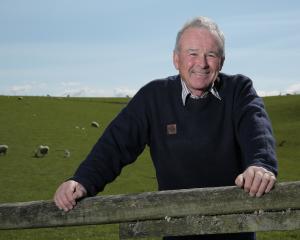
Lignite, or brown coal, is firmly in the spotlight, with two companies proposing to mine the resource in Otago and Southland.
State-owned enterprise Solid Energy and the L&M Group are proposing to mine lignite in the area and convert it to diesel while Solid Energy has proposals for two other lignite-based products, briquettes and the nitrogen fertiliser urea.
Last month the Gore District Council approved the proposed briquette plant at Craig Rd, south of Mataura, but air and water consents from Environment Southland are still pending.
The plant, which could be operational with 13 full-time staff by early 2012, will convert raw lignite to low-moisture, high-energy briquettes.
Lignite, a soft brown fuel, is a low-grade form of coal, with high levels of moisture and low energy.
A report by the Parliamentary Commissioner for the Environment states the lignites commonly mined in New Zealand can have energy levels of 15 or 16 gigajoules of heat per tonne while the lignite in the Mataura field is likely to produce about 13 gigajoules of heat per tonne.
The plant would use a drying process developed by Adelaide company GTL Energy Ltd.
Last year GTL Energy finished converting and testing 420 tonnes of lignite from the New Vale mine at its commercial scale demonstration plant in North Dakota in the US. Testing found that on average, the briquettes had 65% less moisture than the lignite and about 50% more energy, making them very similar to Ohai coal.
Solid Energy announced on Wednesday it had the right to use GTL Energy's coal upgrading technology in New Zealand.
The proposed plant will process about 148,000 tonnes of low-grade lignite coal from a nearby mine annually, turning it into 90,000 tonnes of higher-quality briquettes suitable for fuel for households and industries. A further 15,000 tonnes of lignite will be required annually to fire its on-site boiler.
The coal would be transported to the plant from the New Vale mine, near Waimumu, about 20km away.
The briquette plant is the first of three projects planned for lignite from the Waimumu, Croydon and Mataura areas of Southland.
Solid Energy is also doing pre-feasibility work for a liquid fuel plant. With southern fertiliser co-operative Ravensdown, it is also investigating the viability of a coal-to-fertiliser plant near Gore. Together, they could cost $9 billion to complete.
But it is not the mining of the lignite itself which is creating the most concern. Mataura residents are primarily concerned with the possibility of increased noise pollution.
Glencoe Highway resident Des Pringle, who grows peonies commercially, said he was amazed by the volume of "disquiet" at a residents' meeting with Solid Energy in May.
"Noise and dust pollution were two of the bigger issues and that affects me as well, because dust ruins flowers."
With an increased number of trucks using the Glencoe Highway, more noise and dust would be created, not to mention the noise and dust from the plant itself.
Lower Mataura Valley Landcare Group chairman and Craig Rd resident Mike Dumbar said he battled the Gore District Council for years over noise from the nearby Dongwha medium-density fibreboard plant and wanted the council to re-examine noise levels in the area.
Aside from concerns about noise levels, Mr Dumbar said New Zealand was about "20 years behind the times" and lignite was not a good energy source option.
"So no, I don't think it's a very bright idea, but it [the plant] will probably go ahead anyway - it's opening the gate to what they [Solid Energy] want to do in the future."
Parliamentary Commissioner for the Environment, Dr Jan Wright, said at an energy seminar in Dunedin last month lignite had been described as having "the energy content of cow dung" and unacceptably large amounts of climate-warming carbon could be emitted from lignite conversion plants.
New Zealand was on track to miss its Copenhagen greenhouse gas reduction pledge "by a country mile", she said.
"Instead of [being] below, we are expected to be 30% above 1990 levels.
"That's a gap of about 27 million tonnes of CO2 equivalent a year."
The lignite-to-diesel plant planned by Solid Energy would increase the size of the gap by 20%, she said, with the gap increasing to 50% if a second lignite-to-diesel plant planned by L&M Group went ahead.
However, Coal Research Ltd chief executive Dr Rob Whitney said lignite is one of New Zealand's largest energy resources and could be mined efficiently and sustainably.
Lignite had a high water content but did not have high levels of sulphur or ash.
"Once you remove the water from lignite, you have a good quality fuel. It then has a higher level of heat than coal."
Dr Whitney, who heads a World Energy Council project looking at energy demand through to 2050, said demand for diesel and other fuels was growing and would continue to grow, fed mainly by the increasing needs of China, India and Africa.
"Coal is the fastest growing resource with a huge demand in many countries including China, and I see no reason why we can't supply that demand."
Gasification of lignite and briquette conversion technologies were advancing so quickly conversion plants built in Southland would have greatly reduced or negative carbon emissions, he said.
"Good projects will manage any environmental impacts - New Zealand has a better chance than anywhere else of managing those impacts."
Environmental groups, including Greenpeace New Zealand, Coal Action Network Aotearoa, and Dunedin's Southern Anti Coal Action, have protested the briquette plant proposal.
The Green Party opposes mining lignite, saying large-scale mining and processing could increase New Zealand's carbon dioxide emissions by as much as 10 million tonnes a year, contributing to global warming.
The South Otago branch of Forest and Bird is holding a special meeting, which is open to the public, to discuss the issues surrounding the mining of lignite in Otago and Southland on August 8.
Solid Energy is awaiting air and water consents from Environment Southland.
Submissions closed on June 14, and only two were received - from the Southern District Health Board and Dongwha Patinna NZ Ltd, which owns the Mataura fibreboard plant.
A report to Environment Southland's consents committee will be considered on Wednesday.




